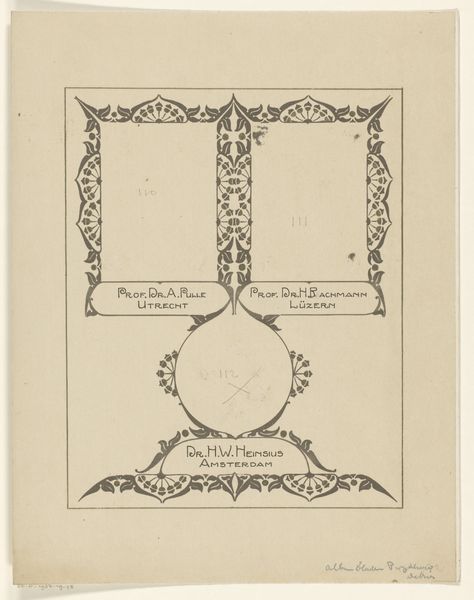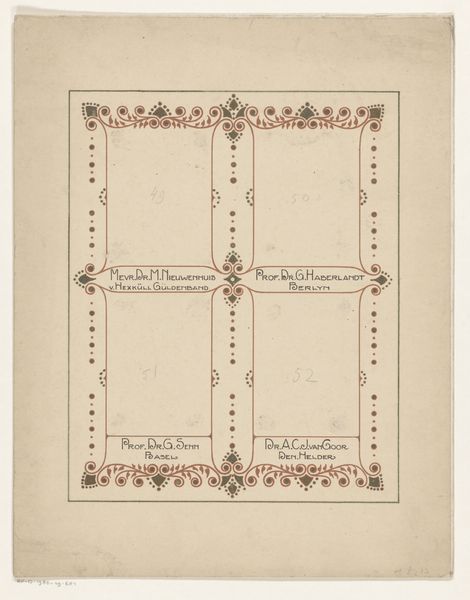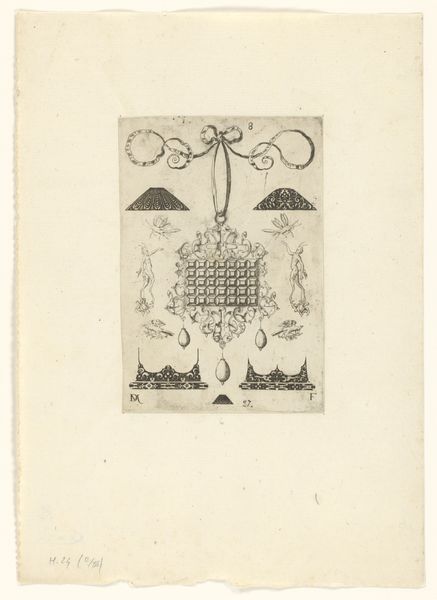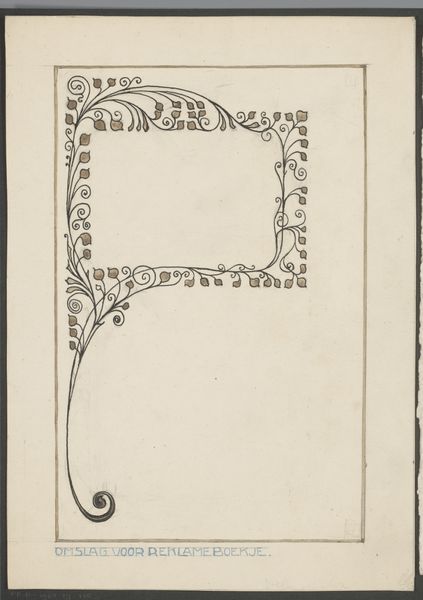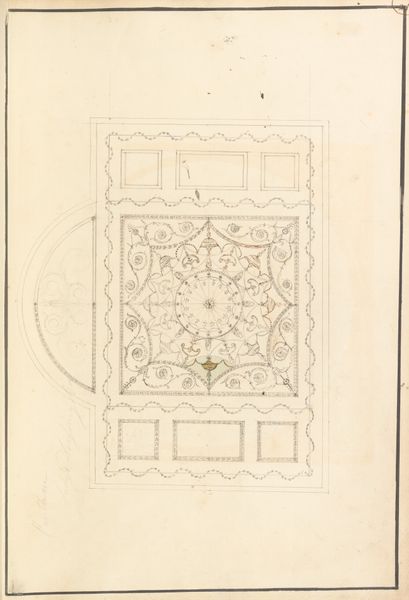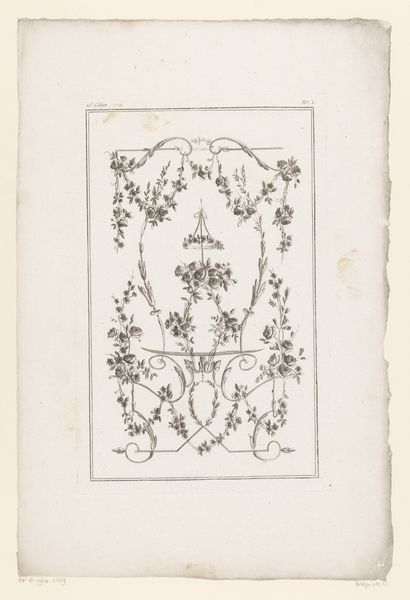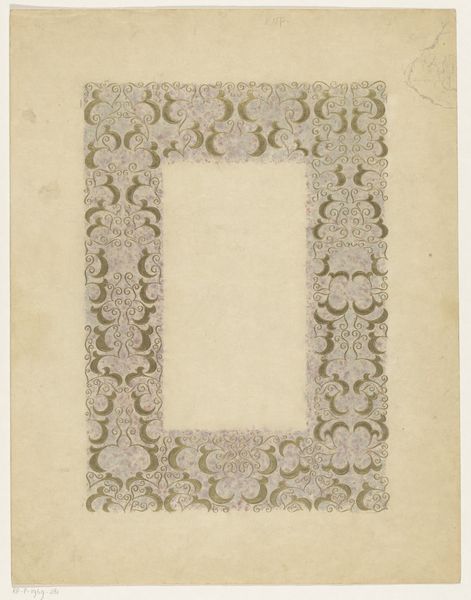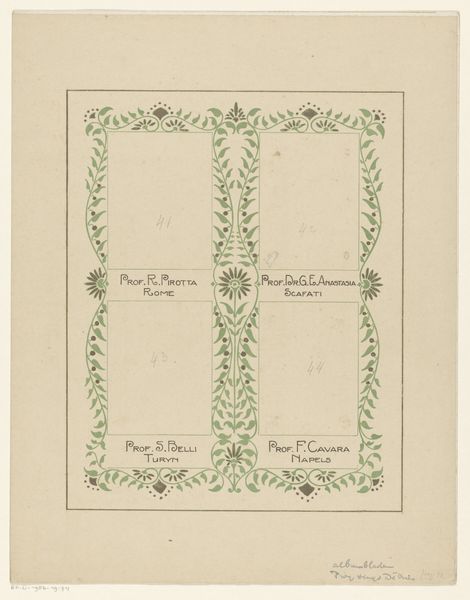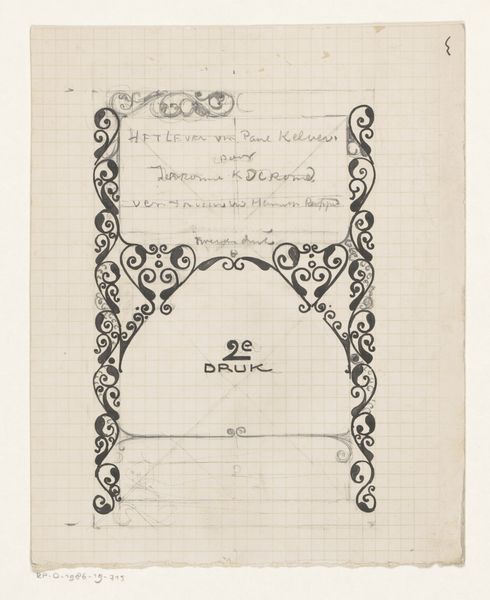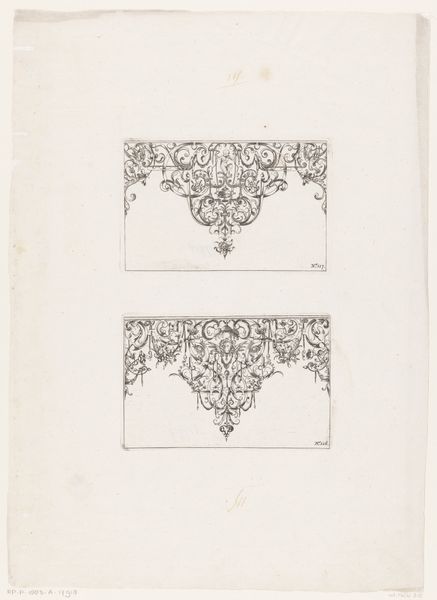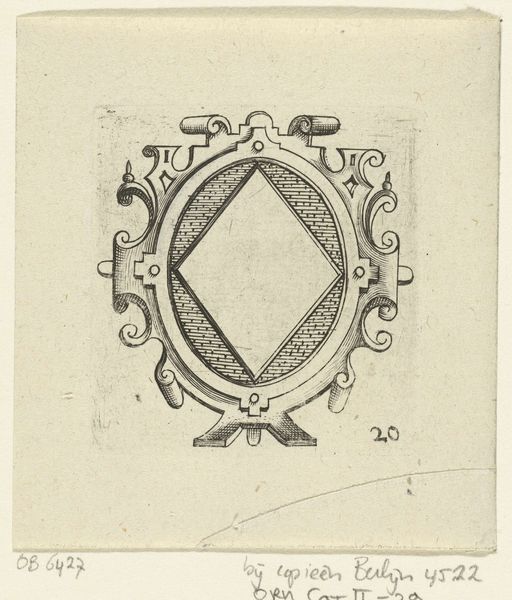
drawing, graphic-art, paper, ink
#
drawing
#
graphic-art
#
art-nouveau
#
paper
#
ink
#
decorative-art
Dimensions: height 340 mm, width 266 mm
Copyright: Rijks Museum: Open Domain
Editor: This is "Albumblad voor een album voor Prof. Hugo de Vries," a 1918 ink and paper drawing by Reinier Willem Petrus de Vries. It has an art nouveau sensibility to it. What strikes me is that it's a graphic design for an album leaf, ready to hold photographs, and it really shows the process of creating a custom page. What do you make of it? Curator: The interesting thing to me is how this work reflects the material conditions of its creation. It's not just art for art's sake. Consider the album itself, a handcrafted object meant for Professor de Vries, someone probably associated with his work, possibly a token of respect and alliance between academics. The ink, the paper, the labor...it's all part of a gift, an exchange of goods and intellectual property. How does it differ from a modern, mass-produced photo album? Editor: It's a bespoke, considered gift, and it emphasizes the artistry involved in production. It challenges the idea that "high art" is separate from everyday objects. We aren't just snapping photos, printing, and sticking; instead, labor is celebrated in the work. Do you think the Art Nouveau style impacts that message? Curator: Absolutely! The stylized, flowing lines, and naturalistic motifs tie into the Arts and Crafts movement, highlighting handmade quality over industrial manufacture. The artist makes an aesthetic object which honors craft in an increasingly industrial era. Do you notice the tension between the artist as artisan versus industrial creator? Editor: That’s a great point, this image feels quite loaded. I see now how it points to labor and material consumption as meaningful social exchanges. Thanks, that gave me a whole new perspective! Curator: It’s fascinating how an image created to hold images speaks so eloquently about production. Thinking through the materials transforms how we perceive art history!
Comments
No comments
Be the first to comment and join the conversation on the ultimate creative platform.
